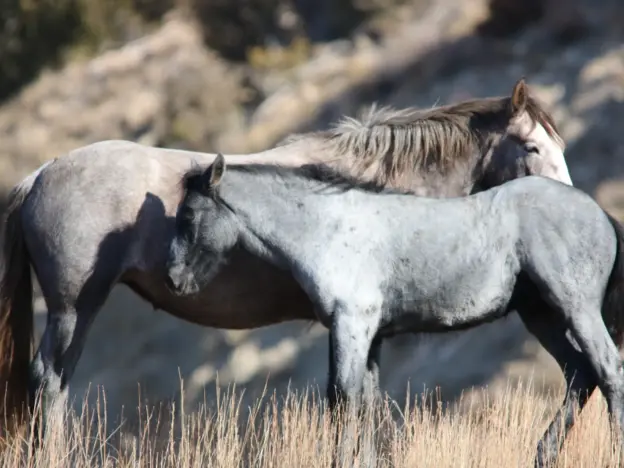Intro
The Nokota Horse is the surviving population of wild horses in North Dakota where they have run wild (despite the enormous odds against them) for at least a century.
Origins
These animals were indispensable to the native populations of the area and prized for their strength when pitted against cavalry animals. Only through the generosity of random people along the way has the Nokota breed survived at all.
In the middle of the 20th century Theodore Roosevelt National Park was created in the southwestern corner of the state on lands these animals roamed. The park spent decades systematically removing the horses due to park legislation about feral animals. However, despite the parks best efforts the most wild and wily Nokotas managed to evade capture and continue to keep their numbers alive. In fact, this constant hunting created an even stronger and more resilient breed – only those strong and resourceful enough to eek a living out in the badlands survived.
Activism in the 60’s and 70’s didn’t overlook the horses and for a period of about 20 years the herd at Theodore Roosevelt National Park was essentially left alone. Until the early 1980’s when outside horses were introduced to encourage cross breeding and roundups of the original Nokotas began again.
Luckily around this time Frank and Leo Kuntz began purchasing them and realizing they had quite an animal their hands started to research their bloodlines. Not long later they were contacting North Dakota government about their historic value to the state itself. The Kuntz brothers called the breed Nokota and created a breed registry in the hopes of saving their bloodlines. They have dedicated their life to this handsome breed.
The Nokota breed encompasses a lot of diversity and thus some individuals are very sleek, light, and predisposed to activities requiring endurance and agility, while other Nokota horses are very heavily built, representatives of the type used by early ranchers to both work the fields and double as mounts. But all Nokotas are built to survive and travel through any terrain, thus boast proportionately large, strong legs and feet.
Features
Average height 14.1 – 15.1 hands
Easy keepers that require little maintenance
Physique
Thickly muscled neck and back
Distinctive square hindquarters (when viewed from behind)
Strongly sloping croup
Exceptionally thick winter coats with leg feathering
Traditional Colors
Black based colors predominate, as do roans, thus the high percentage of blue roans and blacks. Grey is also common and eventually masks many of the other colors on some individuals. Seal brown, bay, and chestnut based colors also occur, including red roan. Dun based colors are moderately common, leading to grullos, tiger duns, apricot duns, and dun roans. Overo markings from full medicine hats to bald faces to blue eyes are relatively common, while sabino markings occur occasionally. Tobiano are only found among Nokota crosses. Nokotas characteristically resist fading of their coats, even in intense sun.
Temperament
More playful than most breeds.
Observant and always thinking, and thus good at keeping both themselves and their riders safe.
Success in the wild is dependent upon close cooperation within the band, and Nokota horses are very sociable, kind, intelligent, and openly honest in their communications and actions, all of which make them easy to train and enjoy.
Use
Versatile all-around pleasure horse
Ranch work
Dressage
Jumping
Driving
Packing
Studying natural horsemanship by observing horses
Special Thanks
Many special thanks to Seth Zeigler who compiled an amazing article of information to add to this page. Most of the facts here are his and you can find out more about him and his Nokotas on his website Zeigler Nokotas.
Helpful Links
* all links open in a new window
The Nokota Horse Conservancy
More Images


